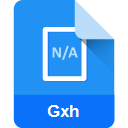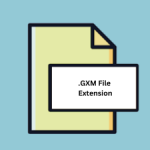.JBC File Extension

What is an JBC file?
.JBC files, as mentioned, are associated with Jam STAPL (Standard Test and Programming Language) Byte-Code. They serve as containers for instructions and data utilized in programming and testing PLDs and FPGAs.
These files encapsulate commands essential for configuring these programmable devices, enabling efficient and standardized deployment of configurations across various hardware platforms.
More Information.
Introduced in 1999, the Jam STAPL language aimed to address the challenges associated with programming and testing PLDs and FPGAs across diverse hardware platforms.
Before the advent of Jam STAPL, each semiconductor manufacturer employed proprietary tools and protocols for device configuration and testing, leading to inefficiencies and compatibility issues.
By providing a standardized language and bytecode format, .JBC files facilitated seamless communication between programming tools and programmable devices, irrespective of the manufacturer.
This interoperability significantly simplified the development and deployment of hardware configurations, accelerating time-to-market and reducing costs for semiconductor companies and system integrators.
Origin Of This File.
The genesis of .JBC files can be traced back to the development of the Jam STAPL language and its associated tools. Jam STAPL emerged from the collaboration between Texas Instruments and several other prominent semiconductor companies in the late 1990s.
The primary goal was to establish a universal standard for configuring and testing programmable devices, streamlining the manufacturing and deployment processes within the semiconductor industry.
File Structure Technical Specification.
.JBC files adhere to a specific structure defined by the Jam STAPL standard. At its core, a .JBC file consists of bytecode instructions encoded in a compact, platform-independent format.
These instructions encompass a range of operations, including device initialization, configuration loading, and testing routines.
The technical specification of .JBC files encompasses various aspects, including opcode definitions, data representation, and checksum verification.
Each opcode corresponds to a particular operation or command supported by the Jam STAPL language, such as setting device parameters, shifting data into device registers, or executing test patterns.
Additionally, .JBC files incorporate mechanisms for error detection and correction, ensuring data integrity during transmission and execution.
Checksums and other validation techniques are employed to verify the integrity of bytecode instructions, mitigating the risk of programming errors or data corruption.
How to Convert the File?
Converting .JBC files to other formats or vice versa typically involves specialized tools or software designed for PLD and FPGA programming.
These tools often support multiple file formats and provide functionality for importing, exporting, and converting configurations between different formats.
The conversion process may vary depending on the specific tools or platforms utilized. Generally, it involves selecting the desired input and output formats, specifying any relevant parameters or options, and executing the conversion operation.
Users should refer to the documentation or user guides of their chosen tools for detailed instructions on file conversion procedures.
Advantages And Disadvantages.
Advantages:
- Interoperability: .JBC files enable seamless integration and compatibility across different hardware platforms and programming tools, promoting collaboration and flexibility within the industry.
- Standardization: By establishing a universal language and bytecode format, Jam STAPL simplifies the development and deployment of hardware configurations, fostering innovation and efficiency in PLD and FPGA design.
- Efficiency: The compact nature of .JBC files allows for faster transmission and execution of programming instructions, reducing programming time and enhancing productivity in manufacturing environments.
Disadvantages:
- Complexity: Understanding and creating .JBC files require familiarity with the Jam STAPL language and its associated tools, which may pose a learning curve for newcomers to the field.
- Dependency on Tools: Effective utilization of .JBC files rely on compatible programming tools and hardware platforms that support the Jam STAPL standard. Limited tool availability or compatibility issues may restrict adoption in certain scenarios.
- Security Concerns: Like any programming or configuration file, .JBC files are susceptible to security risks, such as unauthorized access or tampering. Implementing robust security measures is essential to safeguard sensitive configurations and intellectual property.
How to Open JBC?
Open In Windows
- Use software such as Quartus Prime or Vivado from Intel or Xilinx, respectively, which are popular for FPGA development and support .JBC files.
- Quartus Prime: Launch the Quartus Prime software, navigate to the “File” menu, and select “Open” to browse and open the .JBC file.
- Vivado: Start Vivado, go to the “File” menu, choose “Open”, and then select the .JBC file to load the configuration.
Open In Linux
- Utilize open-source tools like OpenOCD or UrJTAG, which provide support for .JBC files and offer command-line interfaces for programming and debugging PLDs and FPGAs.
- Open a terminal window, navigate to the directory containing the .JBC file, and use commands compatible with the chosen tool to load the configuration onto the target device.
Open In MAC
- Similar to Linux, you can use cross-platform solutions like OpenOCD or UrJTAG through terminal commands to open .JBC files.
- Alternatively, consider running Windows-based FPGA development software through virtualization software like Parallels Desktop or VMware Fusion, which allows you to access Windows applications on macOS.
Open In Android
- Due to the specialized nature of .JBC files and the complexity of PLD/FPGA programming, opening .JBC files directly on Android devices is not feasible.
- However, you can remotely access a computer running Windows or Linux with the necessary programming tools using remote desktop applications like TeamViewer or AnyDesk.
Open In IOS
- Similarly, opening .JBC files directly on iOS devices is impractical due to the specialized requirements of PLD/FPGA programming.
- You can remotely connect to a Windows or Linux computer with the appropriate software installed using remote desktop apps like Microsoft Remote Desktop or VNC Viewer.













